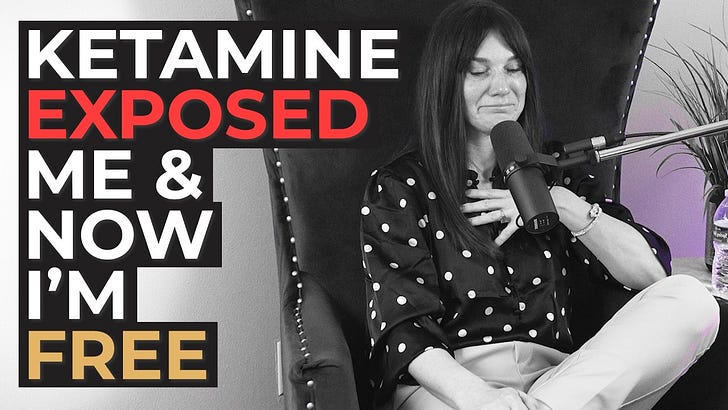Ketamine Therapy Made Me Remember Things I Didn't Want To.
Reflections on memory, trauma, and the journey of rediscovering myself through childhood journals I kept while growing up in Communist Poland.
TW: Sexual abuse, childhood trauma
In recent years, something unexpected has surfaced. Or perhaps it has been surfacing slowly, piece by piece, in the quiet corners of my body. During ketamine-assisted therapy sessions, I keep returning to the same place: a sense, a charge, a feeling that something terrible happened.
Sexual abuse. I don’t have any clear memory of it. None at all, in fact. My childhood is a blank space. But my body remembers something my mind still cannot.
This experience has shaken me. It has made me question the foundations of my life — what I have lived, what I have forgotten, and what I might be carrying without even knowing it. And I am not alone. Many survivors of early trauma report the same thing: a complete or partial amnesia of their childhoods, or what researchers call dissociative amnesia, the brain’s way of protecting us from experiences too overwhelming to process.
When a child is faced with trauma, especially the kind that comes with shame, secrecy, and helplessness, the brain often fragments the experience. Instead of storing it in a neat, linear way like an ordinary memory, it gets tucked away in pieces: a flash of sensation, a vague fear, a bodily reaction with no clear origin.
The result is a kind of time capsule sealed shut by survival instinct. You go on with life — school, friends, achievements, maybe even joy — never knowing what is buried underneath. And then, sometimes years or decades later, something opens the lid. A smell. A sound. A therapy session. A substance like ketamine, which loosens the hold of rigid thinking and allows deeper layers of the psyche to rise.
This is not imagination. It is not fiction. It is the truth of how trauma works.
Even when these traumatic memories are hidden or fragmented beyond conscious recall, they continue to affect us in our moods, our relationships, our sense of safety, and even in how our bodies react to stress. The child who was helpless and scared is still inside us, sometimes silent, sometimes whispering in feelings we cannot quite place.
That is why it is so important not to sweep these sensations aside or dismiss them as irrelevant. Instead, it is crucial to be a detective of our own experience, patiently and gently seeking to understand what our bodies and emotions might be telling us.
This process is not about finding someone to blame or stirring up pain for its own sake. It is about giving that little, scared child inside permission to be seen, heard, and grieved, and healing wounds that were never allowed space to heal before.
After this revelation, I felt unmoored. I did not know what was real or who I really was.
That is why I have returned to my old journals, fragments of my own voice from a time I supposedly do not remember. I want to read what I wrote. I want to feel what I lived through. I want to learn about the self I was before the forgetting began. I will be sharing some of those entries here, not just as nostalgic windows into the past but as a way of piecing myself together. I do not know exactly what I will find. But I know that listening to my younger self with kindness and curiosity is part of this healing.
If you have experienced this kind of memory fog, or if you are on your own journey of remembering, you are not alone.
Feel free to comment or reach out.
If you want to hear and see me talk about my journey of remembering, leave a comment on my podcast or YouTube channel and let me know you found me on Substack.



